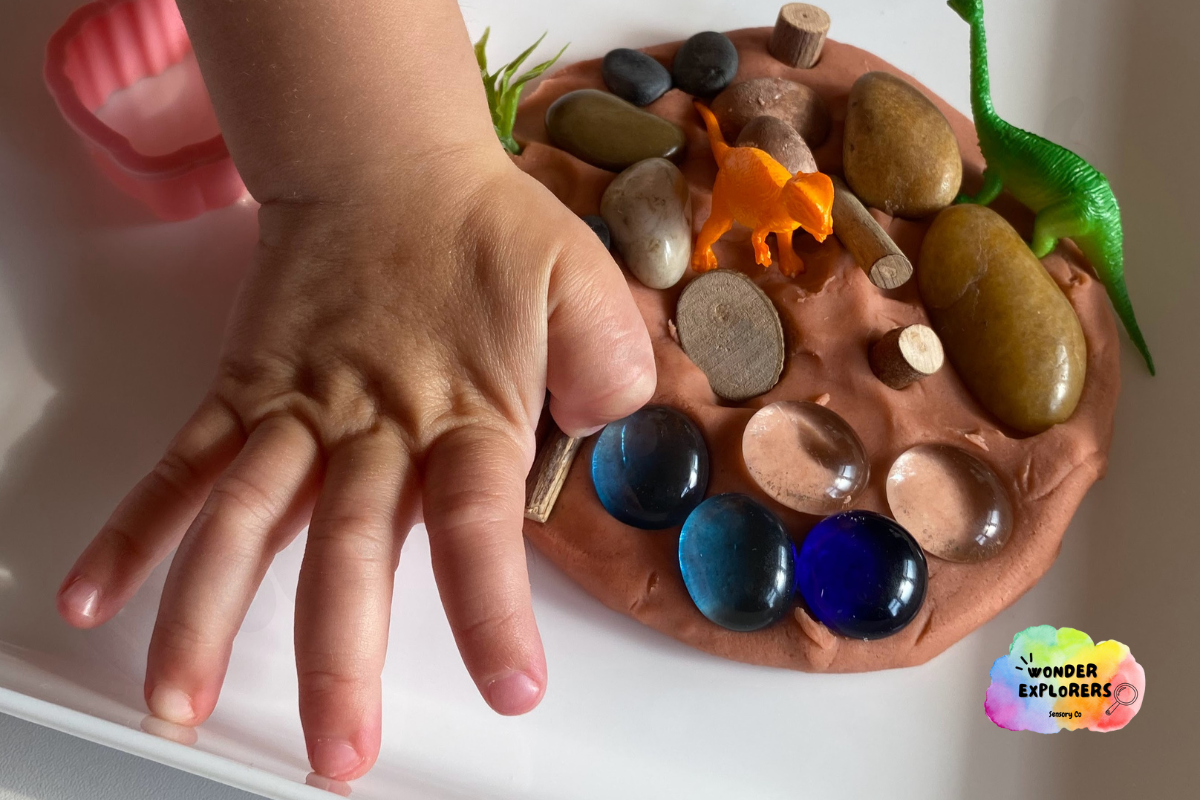First, what is sensory play?
Sensory play is any activity that stimulates our senses.
I bet you can name them: sight, touch, smell, sound, and taste, but they can also include movement and balance.
Sensory play can be very simple. I’m willing to bet your child does it throughout the day and you don’t even realize it is happening – which is amazing, considering the crucial part that sensory play has in children’s development.
By engaging in activities that stimulate the senses, children are creating important neural pathways in their brains, and as a result, they unlock a world of benefits.
The bonus is that the more senses they are activating all at once, the better!
So, what exactly are the benefits?
1. Cognitive Development
Sensory play encourages children to explore and make sense of the world around them.
Play dough squishing, object sorting, pouring, and scooping – all these activities are engaging their senses. Even more, if the play dough is scented or the objects make noises!
Activating those senses enhances development in problem-solving, logical thinking, and spatial awareness.
2. Emotional Regulation
Sensory play teaches self-regulation skills to children. It allows them to explore their emotions in a safe environment through tactile input and allows for relaxation, stress reduction, and anxiety management.
Young children often can’t express their emotions. However, through sensory exploration, they can learn and create a foundation to help them better handle difficult situations in the future.
Imagine a child who is easily over-stimulated. Sensory activities like blowing bubbles and running fingers through rice or sand may help to distract and calm an overly stimulated child.
3. Fine and Gross Motor Skills
Pouring water, threading beads, and squishing play dough are just a few examples of tasks that help develop hand-eye coordination, finger dexterity, and muscle strength.
For example, consider all the ways children are moving during play with a sensory bin and the muscles they are activating. They are manipulating items with their fingers, gripping, using their shoulders and arms, and coordinating to pass objects between hands.
These skills are essential for building a foundation that children need for future life activities, such as writing, tying shoelaces, riding a bike, or playing sports.
4. Social Interaction
All three of my children (currently 8, 6, and 1) love sensory play. Often, I will set up a single bin for them all to share. This provides them the opportunity to cooperate and helps with developing social skills.
They have to learn to take turns and communicate with one another. They have to be patient or work together.
Don’t have older siblings available to play? Look for activities in your area at the library or a community center. Maybe you can set up a shared space for cousins, neighbors, and friends, or just play with your child and practice turn-taking.
5. Language Skills
The opportunities are endless when it comes to language development through sensory play.
Children can be encouraged to describe the textures they feel. They can count or identify shapes, colors, or letters. A story could be created and retold.
Through these activities, vocabulary is enhanced, and ideas and thoughts are expressed. A foundation for literacy is being created.

Incorporating sensory play into your routine can help create a stimulating environment that fosters curiosity, imagination and a love of exploration.
Each squish, splash, and squeeze, unlocks a world of possibilities for growth and development.
So, let’s embrace the (sometimes) messy world of sensory play!

